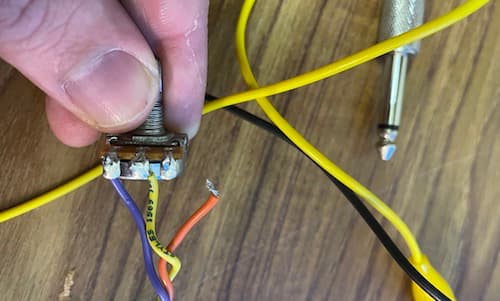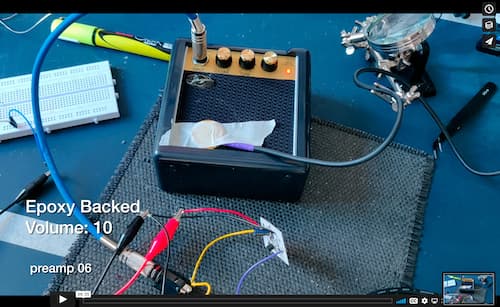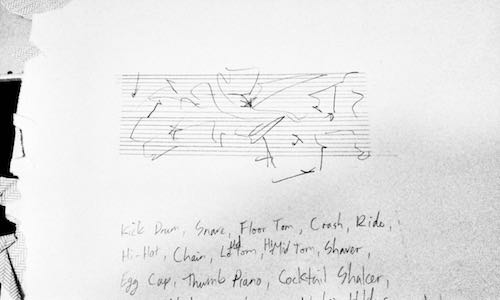I recently finished reading Anna Lowenhaupt Tsing’s ‘The Mushroom at the End of the World’. It wasn’t directly relevant to my work but has sparked a couple of thoughts/questions.
Why Consider Lively Things
Ever since the Enlightenment, Western philosophers have shown us Nature that is grand and universal but also passive and mechanical. Nature was a backdrop and resource for the moral intentionality of Man, which could tame and master Nature. It was left to fabulists, including non-Western and non-civilizational storytellers, to remind us of the lively activities of all beings, human and not human.
Several things have happened to undermine this division of labour. First, all that taming and mastering has made such a mess that it is unclear whether life on earth can continue. Second, interspecies entanglements that once seemed the stuff of fables are now materials for serious discussions among biologists and ecologists, who show how life requires the interplay of many kinds of beings. Humans cannot survive by stomping on all the others. Third, women and men from around the world have clamored to be included in the status once given to Man. Our riotous presence undermines the moral intentionality of Man's Christian masculinity, which separated Man from Nature.
The time has come for new ways of telling true stories beyond civilizational first principles. Without Man and Nature, all creatures can come back to life, and men and women can express themselves without the strictures of a parochially imagined rationality. No longer relegated to whispers in the night, such stories might be simultaneously true and fabulous. How else can we account for the fact that anything is alive in the mess we have made?
(missing reference)
These opening paragraphs address part of why I am interested in relationships with electronic circuits and feedback through objects—non-human things to which I would extend Tsing’s ‘lively activities of all beings’.
Whilst my work doesn’t directly speak about these concerns, I can’t imagine accounting for my creative practice without its existence within contexts of such destructive forces. I’m not just thinking about ecological injustices but also the various forms of social-injustice that make other humans less-than-human.
I don’t think that working with transducers particularly addresses, for example, misogyny. But, accounting for the worldly forces within which I am collaborating goes some way to knocking me off of my pedestal as a creative practitioner. I see this as a route to decentering myself from my work and making room for the context within which I operate. Such decentering also makes space for other creative practices and ways-of-living.
My role as a creative practitioner shifts away from the hubris of somehow commanding materials to bring form into being. Instead, pausing, listening, reflecting, and joining-with, collaboratively give life to complex relationships with all sorts of stuff (council tax, rainfall, cardboard, family, capacitors, fear, birds, Bandcamp, drums, feedback, etc.).
Relationships and Events
Tsing looks at biological development and the role of codevelopment, citing examples of associations between bacteria and fruit flies shaping mating behaviour and species development. Biologists posit that evolutionary development may be better understood of the selection of relationships rather than individuals or genetics.
Interspecies relations draw evolution back into history because they depend on the contingencies of encounter. They do not form an internally self-replicating system. Instead, interspecies encounters are always events, "things that happen", the units of history.
(missing reference)
Event feels like a very loaded term and I’m not knowledgeable enough of its history in philosophy. I do feel a pang of recognition though; in the eventful nature of exploring relationships with materials within my creative practice.
Within a purposefully improvisational approach, materials—drums, circuits, objects—are brought together into a musical system—an audio transducer feedback system—dependent upon the contingencies of encounter. It’s the openness to contingencies—the letting things be without trying to exert too much control—in which the materials take on their own lively and collaborative role; space is given for these other-than-human lifeworlds. It is in the event of these relations that improvised music becomes possible.
Love and Desire
I can’t remember what triggered it (and hopefully I’ll come back to this) but I was thinking about my work with feedback circuits in relation to desire. What is it I’m looking for when making music with these circuits? What indicates that something is working or not? Perhaps it is desire. It could be triggered differently from day to day, dependent upon mood, or weather, etc. It’s not a stable state but rather a collection of conditions that simply make me want to hang around a bit longer, be in its presence a while.
One of Tsing’s protagonists, Dr Hamada, considers the interspecies relationships between mycelial mats—from which the matsutake fungus grow—and trees. ‘Might we think, he asked, of mutualisms as a form of love?’ (missing reference)
In my practice, I am exploring relationships with materials. I’m wary about anthropomorphising, or even sexualising, such relationships. But it is easy to remember how one can love a place, not just a person. I think of how one might chose to stay a little longer, in a park, on a sunny day; how these conditions might arouse the desire to linger.
Perhaps we can conceive of relationships within systems of drums, transducers, objects, and performer in terms of desire, of enjoying states that one may wish to linger in a while. Sometimes, materials will seem to want to pull back to a steady state, I will change something but the system will settle back down despite my efforts. Perhaps, these materials wanted to stay a while?
Disturbing the Landscape
Tsing looks at different approaches to forest management. In Japan there are groups who see the necessity of intervention in making forests that promote matsutake mushroom growth. There are other processes at play but, one of the simplest to describe is that, young pines require enough light to grow and so processes that disturb broadleaf dominance are favourable to both pines and their relations with matsutake. Tsing describes volunteers ‘who disturb the landscape as a way of stimulating changes in multispecies gatherings.’ (missing reference) It’s also important to note that the effectiveness of such disturbance is largely unknown, these groups are held at the whim of matsutake and its associations.
Volunteers make themselves part of perhaps-useful landscape disturbance as they wait to see what happens. They hope their actions might stimulate a latent commons, that is, an eruption of shared assembly, even as they know they can't actually make commons.
(missing reference)
I’ll return to the latent commons but simply this is Tsing’s term for an underdeveloped and unstable commons that includes other-than-human entanglements. In this sense, these disturbance-volunteers aren’t able to create such a commons, but rather they can perhaps create an environment where such entanglements might flourish. This sense of disturbance, in the hope something productive might emerge, resonates strongly with my approach to making music.
The act of turning on amplifier circuits and transducers, attached to a snare drum, creates a disturbance in a system. It provokes resonance and feedback which in-turn feed new disturbances and proliferate throughout the assembled elements. The hope is that this feedback and resonance will be self-sustaining and dynamic, that it will not collapse into either of two steady states—either silence or undifferentiated squeal—that it might be musical, whatever that might mean. Introducing an object, adjusting the snare strainer, altering the gain, repositioning the transducers, are all disturbances I attempt in the hope it might create a space for resonance and feedback to interplay, to find new relations, to create new spaces within which I desire to linger. I hope to provoke a fertile ecosystem so that I might enjoy what grows.
There seems clear analogy to gardening, forest management, and ecological work above. It’s worth noting though, that my performances exist on very different timescales; perhaps a 20-30 minute gig rather than years, decades, or even centuries. Whilst I hope that my disturbances allow something to grow and flourish, I’ll readily disturb things again, after lingering for a minute or two. I’ll try to map these ecological flows to the performance dynamics of an improvised gig.
Latent Commons
This term didn’t make much impact on me whilst reading the book but, in thinking through the bookmarks I explore above, it seems worth considering further.
Can the spaces created through relationships between myself, snare, electronics, transducers, and objects, be considered a latent commons?
For Tsing, the latent commons is a stretching of concepts of the commons (missing reference):
- Firstly, the latent commons isn’t exclusively human. Important here is that the chaos of multi-species entanglements makes this messy and disharmonious.
- Secondly, it isn’t necessarily beneficial for everyone. In collaborations, one species might thrive at the expense of others. Key is that we can only really aim for “good-enough”.
- Next, the latent commons isn’t well served by policy and institutionalisation. It exceeds such attempts, it is fugitive.
- Finally, it doesn’t offer redemption; it isn’t a utopia. It is here and now and humans aren’t in control.
I’m not sure how useful this all is to me1. Firstly, it speaks far more to entanglements of different species, of animate-life, of critters, than it does of entanglements with objects, minerals, technologies, etc. Secondly, it feels more useful, to me, to simply expand the concept of the commons to embrace this complex messiness and de-centre humans. I suppose it’s both: the way, e.g., legal frameworks can be used to shape, map, and constrain the commons, and that this latent commons is outside of that; and the commitment to looking for and noticing contingent, emergent collaborations between species. Still, I’m not sure we need a new category when we could refine our understanding of an existing one.
What attracts me here, is simply the commons part of the latent commons. In relation to my practice, it is that, in my joining with entanglements of circuits, feedback systems, transducers, objects, and all the contingency and liveliness within; a shared space emerges. Commons might be stretching it a little though, it’s not really a shared resource. Perhaps this is simply, collaboration. It’s the notion that we (me, circuits, objects, etc.) all have a voice, all have agency within this shared space. This might also be a bit much, ultimately only I have control of the on/off switch; but, circuits can break and systems can fail.
There is an ethical commitment in my work to such parity of status between humans and non-humans, between the animate and inanimate. It is here that notions of commons feel most useful. It is here that creative forces of disturbance, in the hope that a common ecosystem might flourish, might lead to moments of beauty within which one might desire to linger. This isn’t Tsing’s latent commons but it shares a sense of bubbling effervescence, of exceeding existing concepts, and of admitting other-than-humans.
References
Notes
-
The latent commons is clearly more valuable for others though, e.g., https://culanth.org/fieldsights/latent-commons-in-the-city ↩




